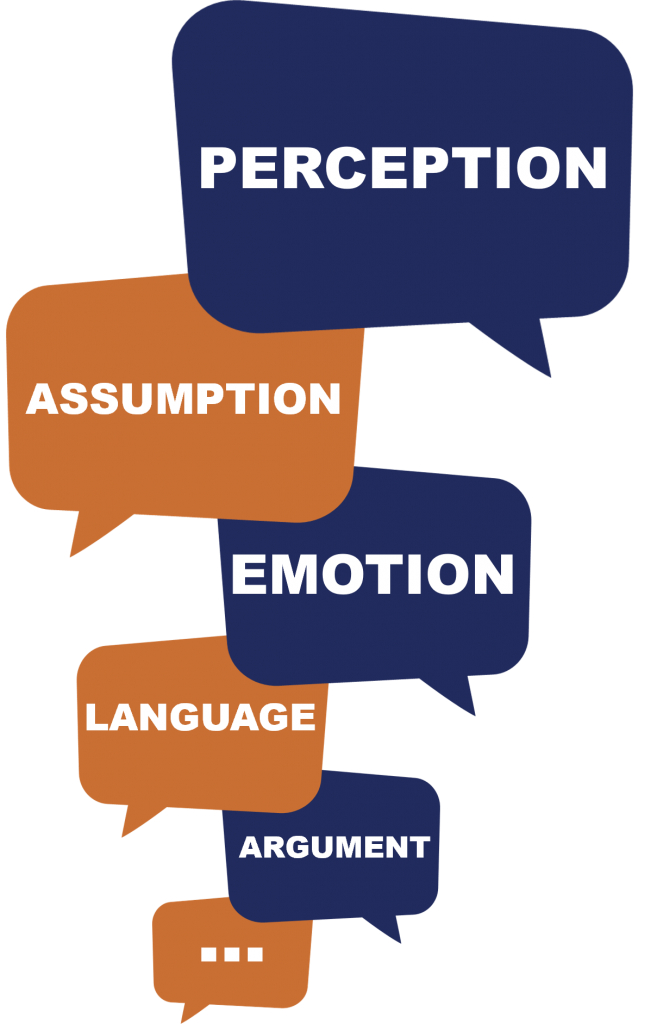
CHAPTER 4
H. Remember the list!
Although it is not mentioned anywhere in this Guide up until now, we have dealing with this topic all along the way to this Chapter, by applying its basic elements and exploring its aspects in detail. What are we talking about? But of course…it’s all about critical thinking!
Using our brain, our experiences, our knowledge, our emotions while receiving some sort of content (including hateful comments), especially when this interaction is happening online with the countless information that we encounter o a daily basis, is the key element to fight against hate speech and make better decisions for ourselves and others.
But how does critical thinking work?
And what are the steps to successfully achieve it?
To start with, let’s try to deconstruct the process of “critical thinking” by breaking it down in its most important components:
Have you ever posted or sent content online that could be considered hate speech?

Perception =>“have the impression”– “notice” => it refers to the way that someone receives and interprets information
Assumption =>“presume” – “suppose” – “guess” – “speculate” => it refers to (sometimes) subconscious ideas that are often related to obvious facts.
Emotion =>“feel” – “like” – “dislike” – “sense” =>although it might put the critical thinking process at risk, it is inseparably related to the human nature. It should be part of the process, but we should manage it properly.
Language => the way we formulate our thoughts and express our opinions affects us and the listeners/readers of our message. Therefore, the language used in a statement affects the way we will receive and interpret it.
Argument =>“strongly believe” – “claim” – “conclude” => it refers to the effort to persuade someone that something is (not) true or should (not) be done, by presenting (a) a topic, (b) reasons for/against it, and (c) conclusions.
Fallacy =>it refers to a false or mistaken idea that derives from incorrect patterns of reasoning (such as not presenting all relevant information while presenting once argument) and might lead to misconception and misinterpretation of a certain topic.
Logic => a set of solid arguments, facts, evidence based data, valid information, truth and solid conclusions. However, sometimes it also involves generalizations, hypothetical conclusions and analogies that falsify the result of the thinking process.
Problem solving => it refers to the process of recognizing and understanding a problem, analyzing and interpreting it, developing a resolution strategy and later applying it to solve it.
Rational thinking =>it refers to making decisions based on logic and strictly structured reasoning, than emotions and feelings. We would say that it is similar to…dealing with mathematics!
Research =>it refers to the process of exploring a topic, checking its validity and cross-checking with other sources.
Clarity/Precision =>it refers to the effort to be clear, accurate and spot-on.
Evidence =>it refers to the process of seeking for data and evidence to prove some information, a statement or an argument right or wrong
Evaluation =>it refers to indentifying the reliability, truthfulness, and correctness of the content, as well as its timeliness.
Explanation => it refers to the process of deconstructing information and trying to understand its origin, as well as the messages between the lines.
Does it look like a loooooong list? Well, it might be, though most of these components are lying in the subconscious of every human and come up to the surface instinctively – so…half job done!
In any case, a proper critical thinkers should never exclude any of these components, but rather jointly use them as integral parts of the process, each one of them adding some extra value and playing their own role!